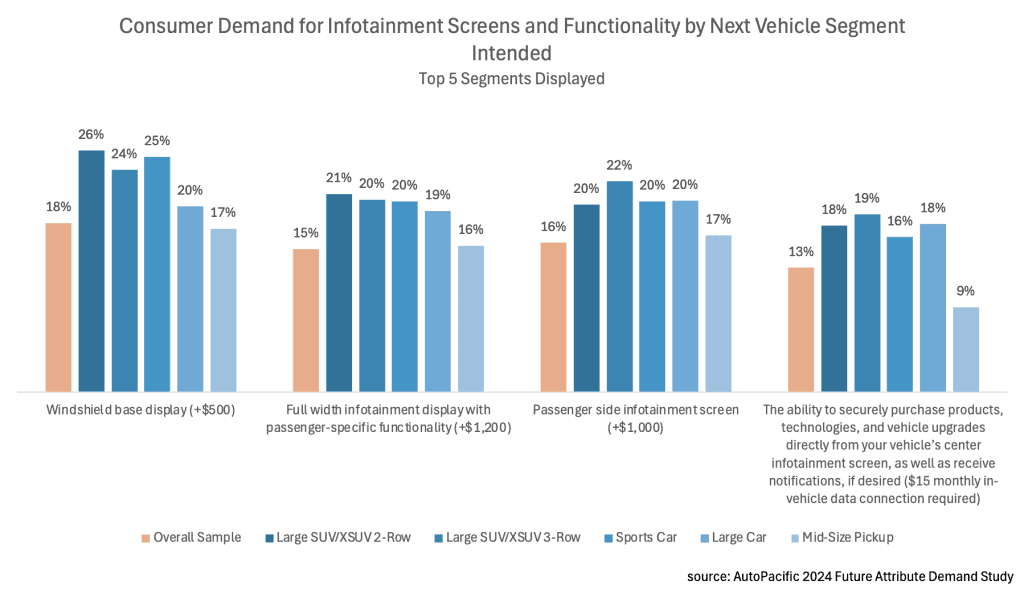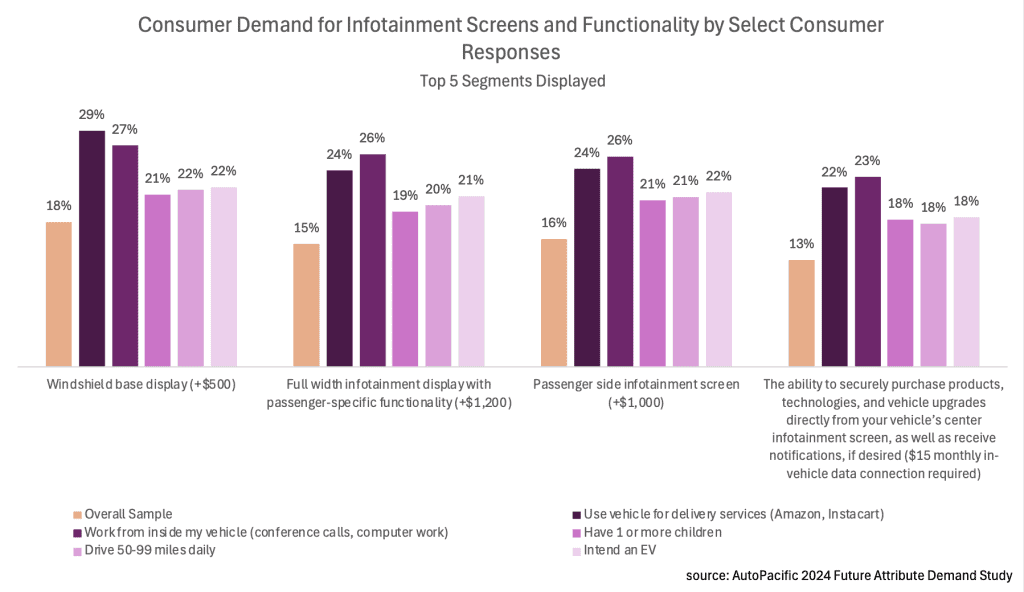
The bigger, the better when it comes to in-vehicle screens for new vehicles – at least that’s the direction many automakers are heading. In the recently released 2024 Future Attribute Demand Study (FADS) conducted by noted automotive market research and consulting firm AutoPacific, consumer demand for in-vehicle screens was measured – from a simple passenger side infotainment screen to full width infotainment displays with passenger-specific functionality, windshield base displays and having the ability to use the screen to purchase products, technologies and vehicle upgrades. Results reveal relatively modest overall demand (13%-18% depending on the screen type or functionality) with greatest interest coming from those intending to purchase a 2 or 3-row large SUV, sports car or large car. The study surveyed over 14,000 consumers who intend to purchase or lease a new vehicle within the next 3 years about their future vehicle intentions, from vehicle type, price range and powertrain to interest in 163 different features and technologies.
The Role of In-Vehicle Infotainment
Infotainment has played a vital role in vehicle interiors since the first digital display in the 1970’s displaying time and radio station, followed by the first touchscreen display in the 1980’s. Since then, screens have grown steadily in size and functionality, with some of today’s vehicles housing pillar to pillar infotainment screens that provide both driver and passenger functionality. AutoPacific surveyed screen size specifically back in 2022 by measuring consumer interest in having a 10-inch or larger center screen. Results showed nearly 30% of all respondents wanted a screen that large, with highest demand coming from large and mid-size 3-row SUV intenders. “The wider and more functional screens we surveyed recently have less overall appeal, but interest comes from the same groups of consumers – the ones who drive the longest, carry passengers the most frequently, and have the highest intention for EVs and PHEVs,” says AutoPacific director of marketing and consumer insights Deborah Grieb.
Function over Form
Use of expansive infotainment screens can enhance the visual appeal of an interior and emphasize an image of technological advancement, but it seems to be the functionality that is driving consumer interest. Consumers with young children, who are most likely to intend a large SUV, and those who use their vehicle for work-related activities such as deliveries, client transportation, vehicle sharing and conference calls, are the most interested in full-width infotainment displays, passenger side screens and on-screen purchase capabilities. Interest also rises consistently with the number of miles driven daily. “Road warriors and multi-taskers need highly visible, safe and convenient access to information and technologies that enable them to do life efficiently,” says Grieb.
In addition to the importance of functionality, when given the choice between buttons, rotary dials, touch screen with tap or swipe, and voice commands for controlling center screen content, preference for touch screen controls with tap or swipe was highest with 28% of all surveyed respondents preferring this technique.
Enha
